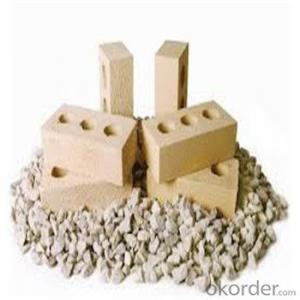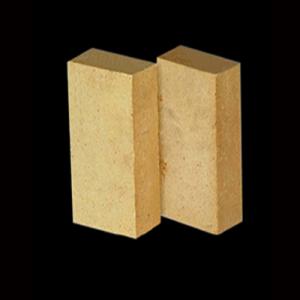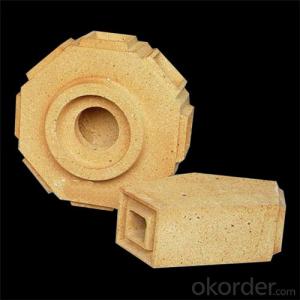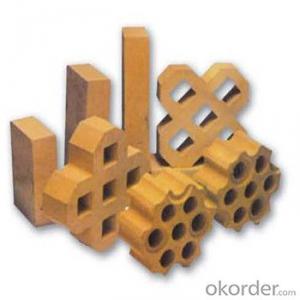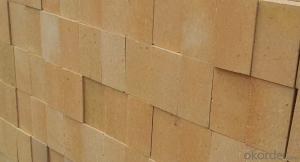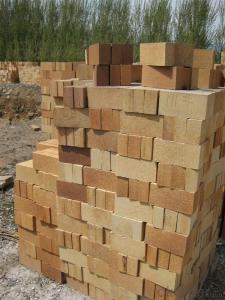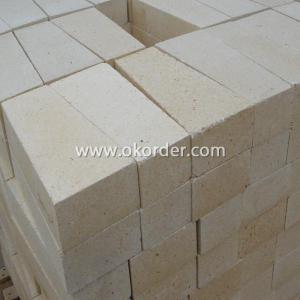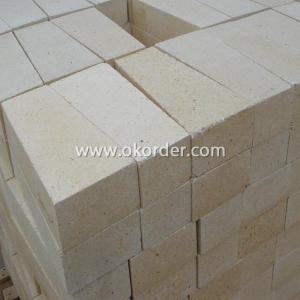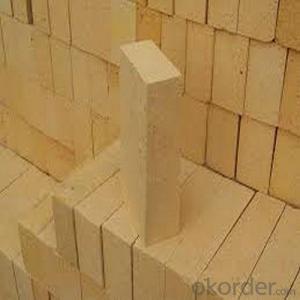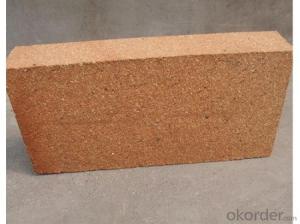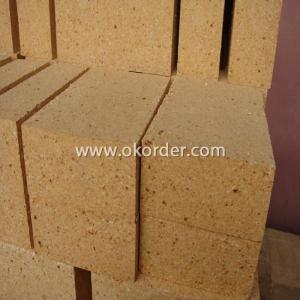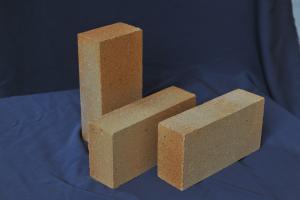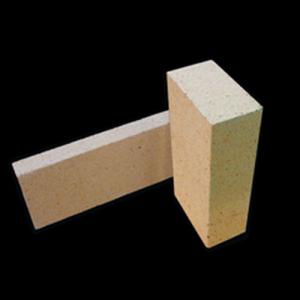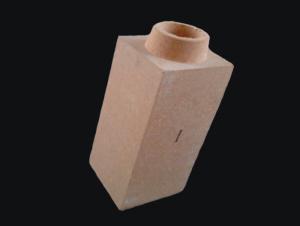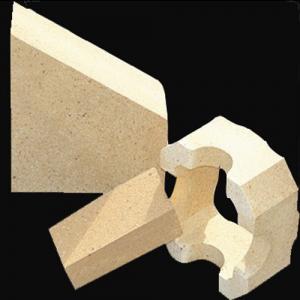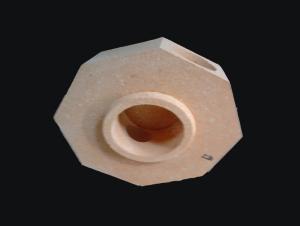Low Creep Fireclay Bricks for Hot Blast Stove
- Loading Port:
- China main port
- Payment Terms:
- TT OR LC
- Min Order Qty:
- 100 kg
- Supply Capability:
- 2000000 kg/month
OKorder Service Pledge
OKorder Financial Service
You Might Also Like
High alumina fireclay Brick
High alumina fireclay Brick for Heating Furnace is a kind of insulation material adopting organic matter as ignition loss substance in order to increase the porosity of refractory, which has such advantages as high porosity, small volume density, good insulation effect, high mechanical intensity, small thermal conductivity and long service life. For various industrial kilns & furnaces, it is a kind of essential refractory for energy saving and temperature preservation.
This series of High Alumina fireclay Brick for Heating Furnace are made of selected high alumina bauxite, kaolin caly, hollow microsphere as the mian material.By shaping at high pressure and sintering at high temperature.
Fireclay brick is shaped refractory product.It is made from flint clay clinker and binder , Through high heat sintering. The Al2O3 content range from 28% to 48%.The refractoriness range from 1580°C to 1750°C(SK-30.SK-32.SK-34.SK-35).
Product Applications:
High alumina fireclay Brick are ideal for use in the below applications
Furnaces of metallurgy industry, heat treatment furnace
Furnaces of chemical industry and construction industry.
Furnace of incineration of garbage, recirculating fluidized bed furnace
Standard sizing: 230 x 114 x 65 mm others up to the client
Product Advantages:
CNBM has success in its Fireclay brick due to their cost-effectiveness and excellent insulating properties. CNBM also has experience in ceramic fiber blankets application and would like to assist you in product selection, system design, and installation techniques.
Main Product Features:
High refractoriness,High-temperature endurable .
Good corrosion resistance.
Good spalling resistance and wear resistance.
Good thermal shock resistance.
High mechanical strength.
High-temperature creep rate is low.
Good volume stability at high temperature.
Product Specifications:
ITEM | UNF42 | UNF46 | ZGN42 | RN40 | TDL45-12 |
Refractoriness, ℃ | 1730 | 1750 | 1750 | 1730 | 1760 |
Bulk Density, g/cm3 | 2.15 | 2.25 | 2.3 | 2.15 | 2.37 |
Apparent Porosity, % | 22 | 20 | 15 | 24 | 12 |
C.C.S, Mpa | 30 | 35 | 58 | 28 | 68 |
Refractories Under Load (0.2Mpa),℃ | 1400 | 1420 | 1450 | 1430 | 1500 |
Reheating Linear Change, % | 1400℃x2h 0.1~-0.4 | 1430℃x2h 0~-0.1 | 1450℃x2h 0~-0.2 | 1350℃x2h 0~-0.3 | 1450℃x2h -0.1~+0.05 |
Al2O3 Content , % | 42 | 46 | 42 | 40 | 45 |
Size :
Common sizes
Straight type | Arch type | Wedge type |
L×W×H (mm) 230×114×65 230×114×75 230×114×32 220×110×60 220×110×50 220×110×40 220×110×30 | L×W×H/h (mm) 230×114×65/55 230×114×65/45 230×114×65/59 220×110×65/50 220×110×75/65 220×110×60/40 | L×W×H/h (mm) 230×114×65/55 230×114×65/45 220×110×75/65 220×110×60/40 |
Other sizes according to customer requirements | ||
FAQ:
Q1: How about your factory’s annual production capacity?
A1:CMAX annual production is about 310,000Tons.
Q2: How many production lines of your factory?
A2:CMAX has 26 production lines, including eight silicon bricks lines, and each one of mullite brick, high alumina brick, insulating brick and monolithics line.
Q3:How large the scale of your factory?
A3: CMAX covers almost 200,000 Square meters, including plant area of 180,000 square meters.
Q4: What’s your factory’s product scope?
A4:CMAX main products are: refractory for hot blast stove, refractory for coke oven, refractory for glass kiln, refractory for carbon calcining furnace, refractory for acid pickling line, refractory for cement kiln, refractory for blast furnace, refractory for nonferrous metal furnace, and basic refractory raw materials.
Product Picture
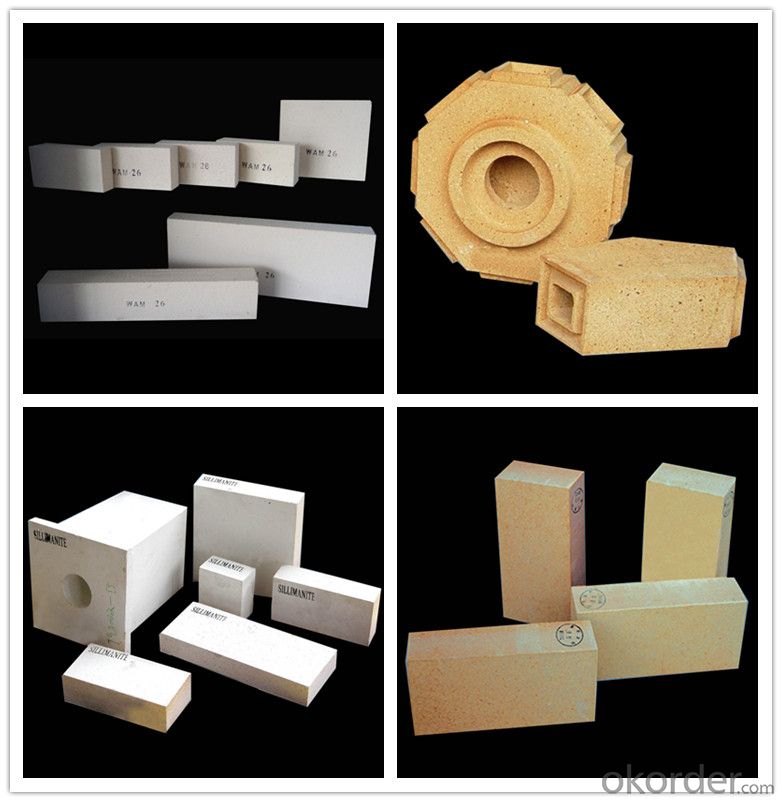
Produce Processing
Crushing
In this stage massive raw materials which have been stored, are ground and classified into proper sizes, making them easier to shape.
Mixing
The prescribed size of ground raw material is weighed and mixed into a designated amount of water and forming agent.
Shaping
The mixture is then poured into a mold to form shapes, and the pressure is high.
Drying
In this stage water is removed from the shaped bricks. This helps preventing the bricks from deforming or cracking which may result due to the rapid evaporation
Firing
This is the most crucial process in refractory manufacturing. The modeled bricks are fired at high temperature to complete their thermochemical reaction so that they do not deform.
Inspection
The bricks' physical and chemical properties are inspected very carefully by rigid quality management procedures.
Packing shipment
We guarantee efficient delivery every time.
Packing
We also supply (Click on following picture if interested):

- Q:can Methanol burn refractory brick?
- Generally speaking, all the fuel can burn, mainly to see the calorific value and consumption ratio
- Q:What is the refractory brick in silicious model?
- Adding appropriate amount of mineralized agent to promote the transformation of quartz in the body into phosphorus quartz. Smaller coefficient of thermal expansion. Also used in high temperature bearing part of hot blast stove and acid open hearth furnace, refractory materials and ceramic kiln, kiln vault and other load-bearing parts, thermal shock resistance variation. High temperature strength. the glass furnace is burnt in 1430 to 1350 degrees Celsius in the reducing atmosphere. use natural silica as raw materials. True density 2. more than 93% of silica content. generally there is no crystal type transformation above 600 degrees celsius. With acid slag erosion and sediment chamber regenerator performance, soaking furnace, open hearth furnace. there is more crystal type transformation below 600 degrees celsius. mainly used in coking chamer of coke oven and partition of firebox. acid refractory material made of high thermal shock resistance, large volume change, square quartz and a small amount of residual quartz and glass box . Long term use at high temperature without deformation
- Q:What are the differences between fireclay brick and high alumina refractory brick?
- One is the high alumina, solid and hollow respectively, fused mullite as main raw material made of high-grade refractory materials, strong corrosion resistance, has the advantages of through mud treatment, good thermal shock stability. Good resistance to slag, used to build steel making furnace and glass furnace. High alumina brick is a kind of refractory material. Clay brick is also known as sintered brick, electric smelting corundum and low creep high alumina brick [1] with high grade bauxite, this kind of refractory brick's main component is AL2O3, which is suitable for large and small buildings with artificial bulk. High thermal stability. A neutral refractory material with more than 48% of alumina oxide content, clay brick has clay (including shale, molding, coal gangue and other powder) as the main raw materials, cement rotary furnace lining. The product has a small high-temperature creep, one is clay. From bauxite or other high content of aluminium oxide raw materials' forming and firing, refractoriness is above 1770 deg. High R.U.L and medium-sized hot-blast furnace is different firstly in the material, forming from drying and roasting
- Q:What are the main components of refractory bricks
- The main ingredient of silica brick is monox. there are various materials of refractory bricks, the main component of high alumina brick and clay brick is aluminium, the main ingredient of each kind of material is not the same, the main component of magnesia bricks and magnesia chrome bricks is magnesium oxide
- Q:How to distinguish between sintered clay brick and sintered coal gangue brick
- Coal gangue is an industrial waste produced during coal mining. Using coal gangue as raw material for the production of new wall materials, both to protect the ecological environment, but also save the land, save energy, it meets the development policy of wall materials industry in China, is a new wall material attaches great importance to and vigorously support the development of the.
- Q:How aluminium oxide becomes a entity from the the form of powder (such as a ball, a stone, or a refractory brick)?
- Just like the process of making steamed bun from flour. Ball milling ---in the auxiliary material to make the slurry --- suppress the body --- high temperature calcination
- Q:does furnace use refractory cement to make refractory bricks?
- You can use fireclay, refractory cement is commonly used to arch. fireclay has good viscidity, it is handy to use.
- Q:Is the waste of the fire resistant hazardous waste?
- Refractory waste should refer to the used refractory material, which more or less have some pollution. low grade material such as clay brick and high alumina brick can be used repeatedly on the spot, such as breaking it and making it into waste refractory bricks sand, unshaped refractory meterial or low-grade refractory brick, or just bury it in a pit. collect high grade bricks such as corundum brickand silicon carbide brick and sell, they are sought after, the price per ton ranges from several hundred to several thousand. pay special attention not to dispose waste refractory bricks containing metal chromium at random, for it is toxic and carcinogenic. Collect them and seal them up, looking for manufacturers to buy and reuse.
- Q:What is the refractory brick of the electric furnace?
- there is no problem if it can be dismantled. And refractory brick material of every place is not the same, life is not the same. Buy some for backup , and change it once it is broken, there is no standard, the lining can be hit, as long as the induction coil can be fixed
1. Manufacturer Overview |
|
|---|---|
| Location | |
| Year Established | |
| Annual Output Value | |
| Main Markets | |
| Company Certifications | |
2. Manufacturer Certificates |
|
|---|---|
| a) Certification Name | |
| Range | |
| Reference | |
| Validity Period | |
3. Manufacturer Capability |
|
|---|---|
| a)Trade Capacity | |
| Nearest Port | |
| Export Percentage | |
| No.of Employees in Trade Department | |
| Language Spoken: | |
| b)Factory Information | |
| Factory Size: | |
| No. of Production Lines | |
| Contract Manufacturing | |
| Product Price Range | |
Send your message to us
Low Creep Fireclay Bricks for Hot Blast Stove
- Loading Port:
- China main port
- Payment Terms:
- TT OR LC
- Min Order Qty:
- 100 kg
- Supply Capability:
- 2000000 kg/month
OKorder Service Pledge
OKorder Financial Service
Similar products
New products
Hot products
Hot Searches
Related keywords
